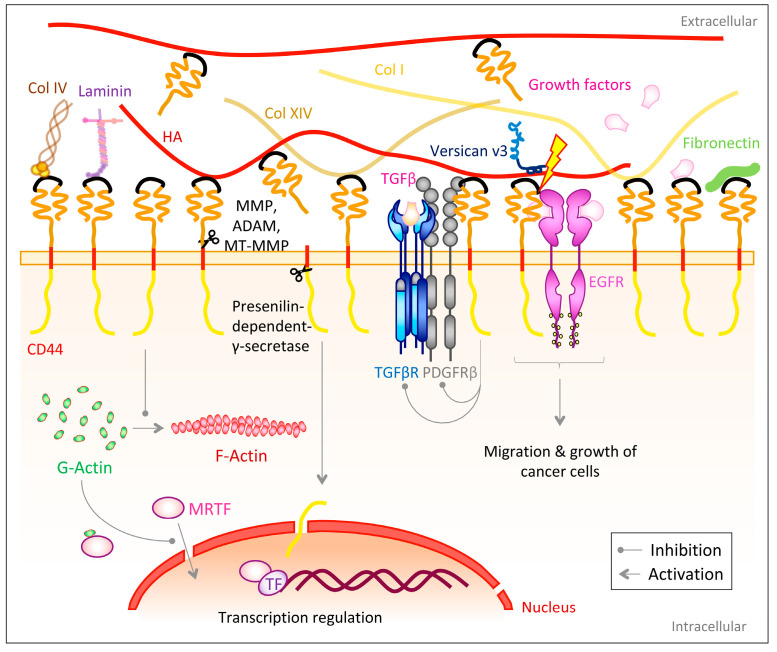Figure 5.
CD44 interacts with various ECM components and cell-surface receptors. CD44 acts as receptor for hyaluronan (HA) [238,239], though can also bind other ECM proteins, such as fibronectin [241], laminin [241], heparin-binding growth factors [245] or collagen I [241], IV [246] and XIV [247]. The extracellular domain of CD44 can be cleaved by MMPs or ADAMs [253,254,255]. They create a soluble form of CD44, which competes with membrane-bound CD44 for HA binding in some cells [256]. The remaining intracellular domain can be released into the cytoplasm by the presenilin-dependent-γ-secretase, where it regulates gene transcription [257,258]. CD44 also prevents the conversion of G- to F-actin. G-actin binds cytoplasmatic myocardin-related transcription factor (MRTF) and hinders it from translocating to the nucleus, where it could co-activate transcription factors (TF) [259]. CD44 interacts with the transforming growth factor β receptor (TGFβR) and the platelet-derived growth factor receptor β (PDGFRβ) and upon HA-activation negatively regulates them [248,249]. CD44 also associates with epidermal growth factor receptor (EGFR) [250,251,252]. Versican possibly competes with CD44 to bind HA and with EGF to bind EGFR and therefore blocks CD44 and EGFR signaling [260].

